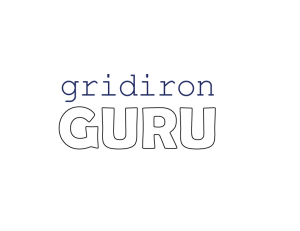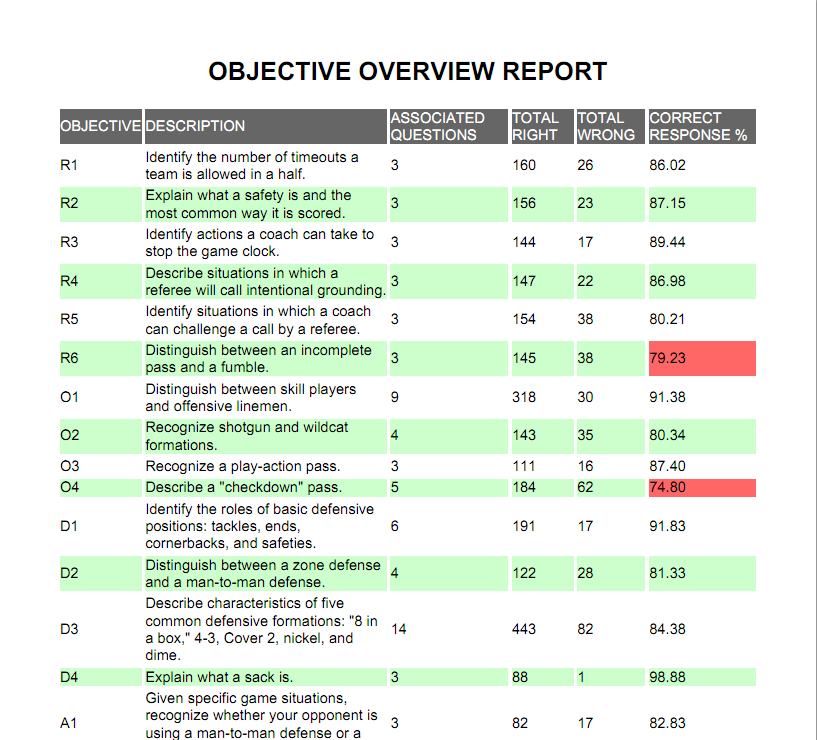
Well, that was fun.
The last of the celebrities and East Coast football fans have left Indianapolis, and what a party it was! It was hard not to get caught up in the “Big Game” buzz last week. Football was on everyone’s brain, and we are so happy to have been able to share Gridiron Guru with you. This was part 1 of our m+s+g=l? learning lab experiment.
Our sign-ups were modest, but we had players from all over the world take part. The top score achieved topic mastery of all four paths AND amassed a Grab Bag score of 126,000,000. Talk about self-directed learning!
Part of social learning is that the “teacher” learns too. Unlike the bearded character in our game, we are NOT Gurus who have achieved mastery. We know what we are good at and love using our expertise, but there is always more to learn. And boy, did we learn a ton from putting this game together! Here are 5 take-aways for you to consider as you begin looking at ways to “gamify” your training and create opportunities for informal, non-traditional learning on mobile platforms.
1. Respond to results in real time. Social learning platforms enable facilitators to respond to the needs of learners in a more immediate, direct fashion. The admin side of the game engine we created for this (KnowledgeGuru) has a robust set of reports that allow us to see what learning objectives and questions were the hardest. Here is a quick view at part of a learning objectives report:
While most of our objectives received a high response percentage, a few dipped below what we considered an acceptable baseline level. Social media allowed us to respond in real time. We created short, concise learning aids and shared them as PDFs via Scribd. The learning aids were sent out via Twitter so that game participants could view them. You can view one of ur learning aids HERE. We also tweeted hints and tips for the questions with a low correct response rate.
2. “Social” Integration Must be Seamless. Even if you are designing a learning experience for a corporate environment, it is important to integrate social sharing functions seamlessly. While we encouraged participants to follow theKGuru on Twitter to receive game tips and updates, the beta version of our game did not have The Knowledge Guru Twitter feed embedded in the interface. Learning aids must be easy to find and accessible for learners to take advantage.
3. Merge Gamification With Social Platforms. One of our favorite features of Knowledge Guru is the ability for users to track their progress by region and globally on the leaderboards. A little competition never hurt anyone! But a learning solution that claims to integrate social must do so in more ways than one. We are adding a “Tweet my score” feature to various stages of the game for the next phase of our Learning Lab. We will also integrate the Twitter stream within the game so players can see tweets from within the game itself.
4. Social Learning demands individual engagement. With no one looking over your shoulder, who will motivate you to complete training that is designed to be “informal” and “social” in nature? Of course, the training itself must be fun and engaging enough to keep you hooked in, but we still think external objectives are important. Since no one was making our learners play Gridiron Guru and they did not need to know the material for their jobs or a project, we noticed participation faltered in the later rounds. Since the Knowledge Guru game is primarily an engine for “on-the-job training” and gamified delivery of required knowledge, it lacks the bells and whistles to compete with a game like Temple Run or Angry Birds on pure fun factor and dopamine release. If participation is not mandatory, your “gamified learning experience” must compete against every other potential distraction on the web! Even if participation is mandatory, make the experience as compelling as possible. We plan to focus on our most compelling question sets to make our next game even more enjoyable to play.
5. Manage learner expectations from the outset. As we said, this is no Temple Run or Angry Birds…but Knowledge Guru is trying to get you to REMEMBER information long after you play the game. The instructional design behind it deliberately uses repetition and the concept of spaced learning over time. Each topic contains three paths that you must complete to reach mastery. Each question contains three iterations – spaced across the three paths. You will see content multiple times. If you miss a question, you get immediate feedback. When you re-start after a miss, you get the question you missed as your first one. When you “unlock” the grab bag (which is where you can get REALLY high scores), you get a randomized selection of all the questions in the game…spaced learning over time since you can’t knock it until you’ve done all the topics. All this is really good instructionally…but really bad if the learner doesn’t understand what’s going on and buy into it.
Needless to say, we’ve learned a whole lot from this experience. We’re e making tweaks to the game and creating a whole new set of questions for phase two of our learning lab, College Hoops Guru, coming in (you guessed it) in mid-March. We have also gotten a lot of ideas for phase three of the game, which will be 100% twitter-based and not rely on a game engine at all.
As for our winner? He asked to donate his $25 prize to the Dayspring Center, a temporary homeless shelter in Indianapolis. While he has requested to remain anonymous, you can go check his score out on the Leaderboard.




We always strive for a balance between style and function, delivering your website in an attractive and efficient package that will benefit your website visitors and your business, helping you stand out in your marketplace.